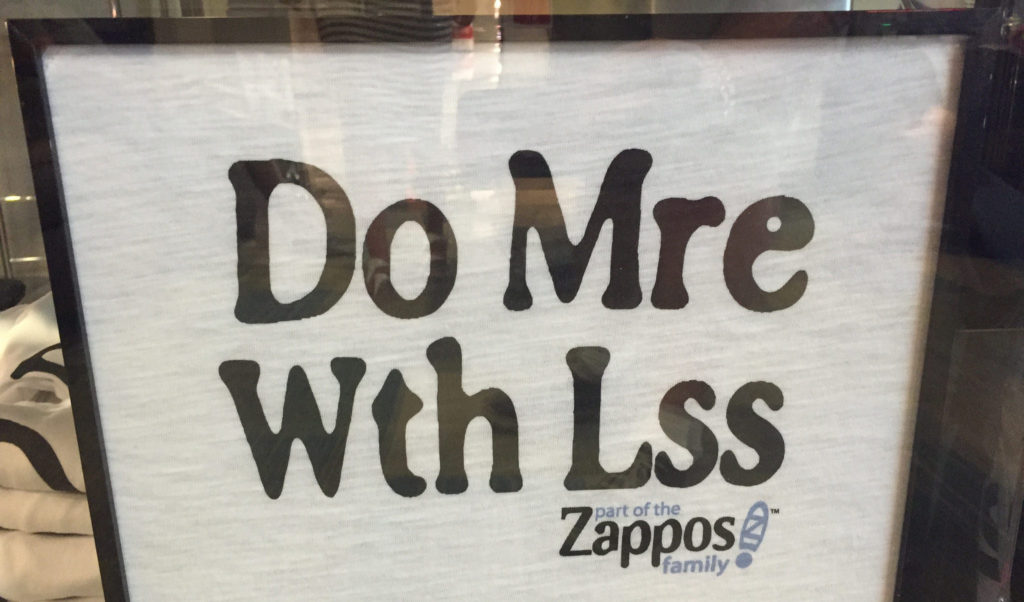When Gregory Bateson was developing his double-bind theory, he must have been trying to comply with Plan S. When a person is put in a double bind, the instructions are contradictory. It’s not possible to satisfy one set of conditions without violating the other. This will make you crazy, if you aren’t already. The double bind comes into play in scholarly publishing when some groups want publishers to do more and more and others insist that publishers should make do with less. After all, publishers apparently have a 40% profit margin, so stop whining and share the wealth.
The New York Times is on the case. Working with ProPublica the Times has exposed a pattern of insufficient disclosures of conflicts of interest.This is important stuff and the Times is to be commended for exposing this. If Dr. Jones is on the board of a pharmaceutical company and then proceeds to write an article about one of that company’s products, she should disclose her financial interest; if Dr. Smith has his expenses paid by a company to attend a conference, he should disclose that payment in his published articles. We would expect no less, but what the Times and ProPublica have demonstrated is that compliance is spotty at best. We are fortunate that these failures to disclose conflicts have not resulted in anything else. As the Times says, “There is no indication that the research done by . . . the . . . doctors with incomplete disclosures was manipulated or falsified.” Still and all, “The Times and ProPublica found that journals themselves often gave confusing advice and did not routinely vet disclosures by researchers, although many relationships could have been easily detected on a federal database.” Note that phrase “easily detected.” We will be coming back to that.

As the Times tells it, this is a story about ethics, but insiders in scholarly publishing will note how selective the Times’s piece is. The examples in the article come from three journals: The New England Journal of Medicine (NEJM), The Journal of Clinical Oncology, and The Clinical Journal of the American Society of Nephrology. As they say, this is not exactly chopped liver. There are no references to PLOS, Scientific Reports, Frontiers, or any of the denizens of Beall’s List or Cabell’s List or any list that is not concentrated on the Ivy League of subscription-based journals publishing. This is not to give NEJM and its cohort a pass but simply to remark, superfluously, that the Times is living in its own filter bubble, where established and distinguished editorial operations survey the horizon and see only kindred organizations. The message is, You should be doing more.
Meanwhile, back at Plan S, we learn that not only must publishers comply with a stiff set of requirements (incisively documented by Angela Cochran on the Kitchen) but they are also to be put on notice that their article processing charges (APCs) must not be too high. We don’t know yet what an acceptable APC will be or whether it will be an instance of moving the goal posts (that would be my guess), but the message is, You have to do all these things with less money. Since publishers have 40% profit margins, stop complaining.
Let’s turn to the back of the envelope. The conflicts that the Times point out could, says the Times, be easily detected. Depending on whom you ask, there are between 2 and 3 million articles published every year. For comparison’s sake, the Times, which is a hefty publication, publishes about 300 stories a day or approximately 100,000 a year. In other words, scientific article production (at 3 million a year, to capture all the emerging open access platforms) is the equivalent of a year’s worth of about 30 New York Times’s. It would take a significant amount of labor to check on all the conflicts. But you can automate it, right? After all, we can look to the great success Facebook has had in automating the process of removing hate speech from its platform. As some society publishers scratch their heads trying to figure out where they will find the capital to hire more staff or for automation, we should not worry — because publishers have 40% profit margins.
Some more arithmetic. As I have noted on the Kitchen before, the average amount of money subscription-based publishers receive per article published is around $5,000, which you get to by dividing the approximate number of toll-access articles (perhaps 2 million) into the size of the industry segment (about $10 billion). Some publishers earn far more than $5,000 per article, but not the ones you think (with their 40% profit margins) but mostly society publishers with must-have brands built on important and original research and global distribution. If Plan S’s backers put downward pressure on APCs, as appears to be certain, publishers will scramble to reduce costs, which will reach into the editorial area. Thus the Times’s “easily detected” conflicts of interest become harder and harder to investigate.
So here we are in the double bind of scholarly publishing today. On one hand, we need to do more: we need stronger editorial programs to police the literature. On the other hand, we need to spend less (insert reference to 40% profits here).
I’m with the Times. For all its solipsism and sanctimony, it understands what we want from the research community, whereas the advocates of Plan S, despite their privileged vantage as the funders of much research, do not. What the public wants is better science, not open science. Plan S has put those two forces in conflict, and it is driving everybody crazy.
Discussion
22 Thoughts on "The Double-bind Theory of Scholarly Publishing"
“What the public wants is better science, not open science. ” I presume this claim is based on a valid opinion poll. Grateful if you could provide the source.
Agreed: We will better understand the claim if it is evidenced and documented, but we can observe from the start it is better made openly and discussed here than it would be from behind a paywall.
My POV: Open science goes hand in hand with better science, no evidence or reason to even hint they are mutually exclusive.
The light of day is the best disinfectant.
Open science isn’t the same as open access. APC-driven open access is incredibly problematic. Just look at Tim Vines’ 20 Sep 2018 graph plotting $APC and acceptance rate, or at how publishers start OAMJs to retain rejected articles in their portfolio/income statement (Wakeling et al, 2017, Learned Publishing, doi:10.1002/leap.1117).
I can (and do) engage in open science practices while publishing in a toll-access journal. I deposit my raw data in an open data repository whether I’m publishing in a toll-access, APC-open or platinum/diamond open access journal. I have not found there to be much of a difference between them in terms of requirements.
That being said, if publishers are making 40% profit, I am not very sympathetic to their double bind. They can afford to spend 15% more on editorial rigor and they will still be providing some excellent returns.
Pay to publish creates companies that just publish for the pay. Hardly, better science or useful science!
What our research shows is that what researchers want is an excellent publication service, pulling everything onto a single international open access platform that helps promote them and their work both within their own and wider science community and public, and they want this platform to be free to all comers both to read and publish on.
What is the margin on patent profits realised by researchers and the spin-off companies generated? This is also publically paid for research, how many disclose that the relevant patent was achieved as a consequence of Government funding of their institution?
I think focusing on “better science versus open science” avoids the real issue, which is the cost of better science. As the article begins, better science means, among other things, enforcing transparency so that readers can assess potential biases in their evaluations. And if the current system is inadequate, then doesn’t it stand to reason that new solutions mean new expenses?
Open science can lead to better science, but not with the downward pressure on revenues. Free is not always better (or… you get what you pay for). If funders want open science, they need to underwrite the costs of publishing and not demand that everyone else pays instead of them.
After all, what would Wellcome and Microsoft do if a NGO or government agency demanded that they reduce the price of pharmaceuticals or software just because they were too profitable?
I think we have two issues here:
a) Better Science: Quality science takes time and money from idea to verification. The pressure to publish and concomitant “rankings” forces compromises by researchers which leads to a series of issues, in part, the focus of this column, and, related, to the increase in publications, often little more than expanded “notes”. Here the issues lie within the research community.
b) Profits: The publishing community is caught up in the global issues which, in part, is manifest in the growing spread between the upper 10%, or so, and the bottom, largely attributed to those whose income derives from “rent seeking”, owners of capital, including those who benefit from Maxwell’s creative insights-not a well countered response, and perhaps dismissive, by Esposito when noting the 40% profits in this column, or in other columns in the Kitchen.
The bio/medical arena is a paradigmatic example where both the publishers and the researchers have significant investments and bottom line returns at stake. Citations of sponsorship becomes, perhaps, only one element of a more complex issue in that all benefit, including the journal by noting the source of funding
Excellent post. I’d like to extend your point about the Times’ number of articles vs. scholarly publishing’s by changing the denominator to authors — that is, the Times’ has a stable of mostly hired professional writers they can monitor, while scholarly and scientific publishers receive papers from all over, usually with more than a dozen authors (and sometimes hundreds) linked to each one. This makes the volume of conflict checking in scholarly publishing far greater, a point that may be lost on the Times and ProPublica.
Can scholarly communication (an exercise purely communicating no “final” verdict, but matters up for further scientific scrutiny) be really compared to journalistic reporting of news (even if they are “sponsored” by people taking sides)?
BATESON AND APC – HELP! We are told that the Scholarly Kitchen is not only for publishers, but also for those who publish. As one of the latter, I struggle to discover the meaning of APCs. The incomprehensible acronym left me in a double-bind whether to continue reading, but I did. Apparently APCs are something that “must not be too high,” and people worry about the difference between an “acceptable APC” and one that it not. Google is no help. A myriad of terms appear, but none appear to correspond with its meaning in the blog (that Esposito cunningly lured me into reading by referring to Bateson, whose father’s biography I wrote). Please, please, Joseph, help me!
Regardless of the business model, “better science” will always be a debatable term. This has to do with a lot of social, cultural, and psychological factors of how we measure the “betterness” of what is “science”. The public (as a member of it I can be a data point), always sought transparency, fairness and responsibility from science. Has science itself consistently given that? I am not sure, but targeting a medium of science communication for this is certainly a weak strategy. After all, journals are just one medium of this communication. If people do not want a business model for the system which science created, then perhaps changing the system of communication would be a better deal. Who needs journals in 2030? Welcome, creative destruction! Innovate and make a point. (Disclaimer: OA is not an innovation, it is just a different financial model)
The problem with the current publishing regime is the incentives. Scholarly publishers make 40% profit margins (I’ve read elsewhere 25-35% nett, but still huge). Elseviers posted a billion dollar net profit last year. Other estimates are that each article published generates $8k in net profit for the publishers. These are incentives to publish more, and the easiest way to do that is reduce quality standards.
On the author side, there is tremendous financial incentive to publish more: in order to get a job at all, to keep their job, to get tenure, to secure advancement. The peer reviewers and editors themselves all work in the same publish-or-perish academic sweatshop. And so their world view becomes shifted towards increased publication, and to avoid co-creating a system in which standards rise, making it more difficult for all.
What we have in the academic publishing is a financial system in which all parties benefit from letting more articles through the net. A better system would be one in which the publishers are not-for-profit, with any surplus applied to improving the publishing systems. Authors could be limited to say three articles a year (in the miracle year of 1906, Einstein published four) with those three rated purely on quality.
If you want quality: reward quality of output, not quantum. This, after all, is how students are graded. We might even look at replacing restricting the peer reviewers to only those who can show the the circumstances of their employment are not made easier by a weak system which makes it easier for they themselves to publish. Thus, as with students, academic authors would be graded by external review.
Being limited to putting your name on just three articles per year would not only curtail the mass production of low quality papers, but also all the authorship swapping, breaking up of single results into multiple weaker papers, and other gaming of the current system.
You do realize that not-for-profit publishers already exist, yes?
Thanks for the reminder! Sadly, they are in the minority.
No, they are not. There are far more NFP research publishers than for-profit ones. Your information is simply wrong.
Perhaps I used the wrong word. My understanding is that the scholarly publishing market is dominated by the for-profit operators which might indeed be fewer, in the way that there are fewer Walmarts and Costcos than there corner stores, but the former dominate the market. A commonly cited figure is that the top five largest, for-profit, academic publishers publish 50 percent of the literature. And that’s just the top five. In one of your own articles, you state: “The presence of NFP institutions and publishers serves as an offset to the influence of the for-profit firms, but there is no question who is the biggest kid on the block.”
Here’s a good reference:
https://journals.plos.org/plosone/article?id=10.1371/journal.pone.0127502
But yes, Joe is right in that there are hordes of small and not for profit publishers, but you’re right in that the big commercial houses dominate the market (and consolidation into those houses continues apace).
David, your post is on target and well understood, and tacitly acknowledged, by both authors and publishers. Hence the rise of the increase in journals taking advantage of the situation. Listings of “questionable” journals is an attempt to control the market. As one reader of the Kitchen has suggested, until those who use the journals for making decisions on grants, promotion, tenure and even passing courses would read the articles instead of using the numbers as surrogates then, the incentives to change are worse than getting individuals to quit smoking.
It doesn’t have to cost much to police this. There is a similar issue with fraudulent data, where it is clearly impossible to verify at the time of publication. Instead there just needs to be some clearly advertised sanctions for when authors fail to disclose industry funding, plus a clear process by which authors can disclose COIs before publication.
Who is going to run that sanctioning process? What sources will be created/used to uncover COIs (openpayments.org is a start, but is woefully incomplete)? Who will pay for creating and maintaining that resource? Who will monitor papers, check the COIs listed against that source, make accusations where discrepancies arise, consult and confirm their validity with the author, deal with the legal teams at the author’s institution (and any resulting lawsuits), decide the appropriate sanctions, put those sanctions into place, and ensure they are enforced? How much do you estimate each of these things would cost, and who should pay the costs?
“What the public wants is better science, not open science.”
Open Science is a much bigger subject than open access and involves the society (citizen science) and the economy (open innovation). But Open Science leads to better science and can be the key to achieve a better scientific world. There is so much potential with open metrics, open peer review and open data/access in terms of reproducibility and reliability of research output.



